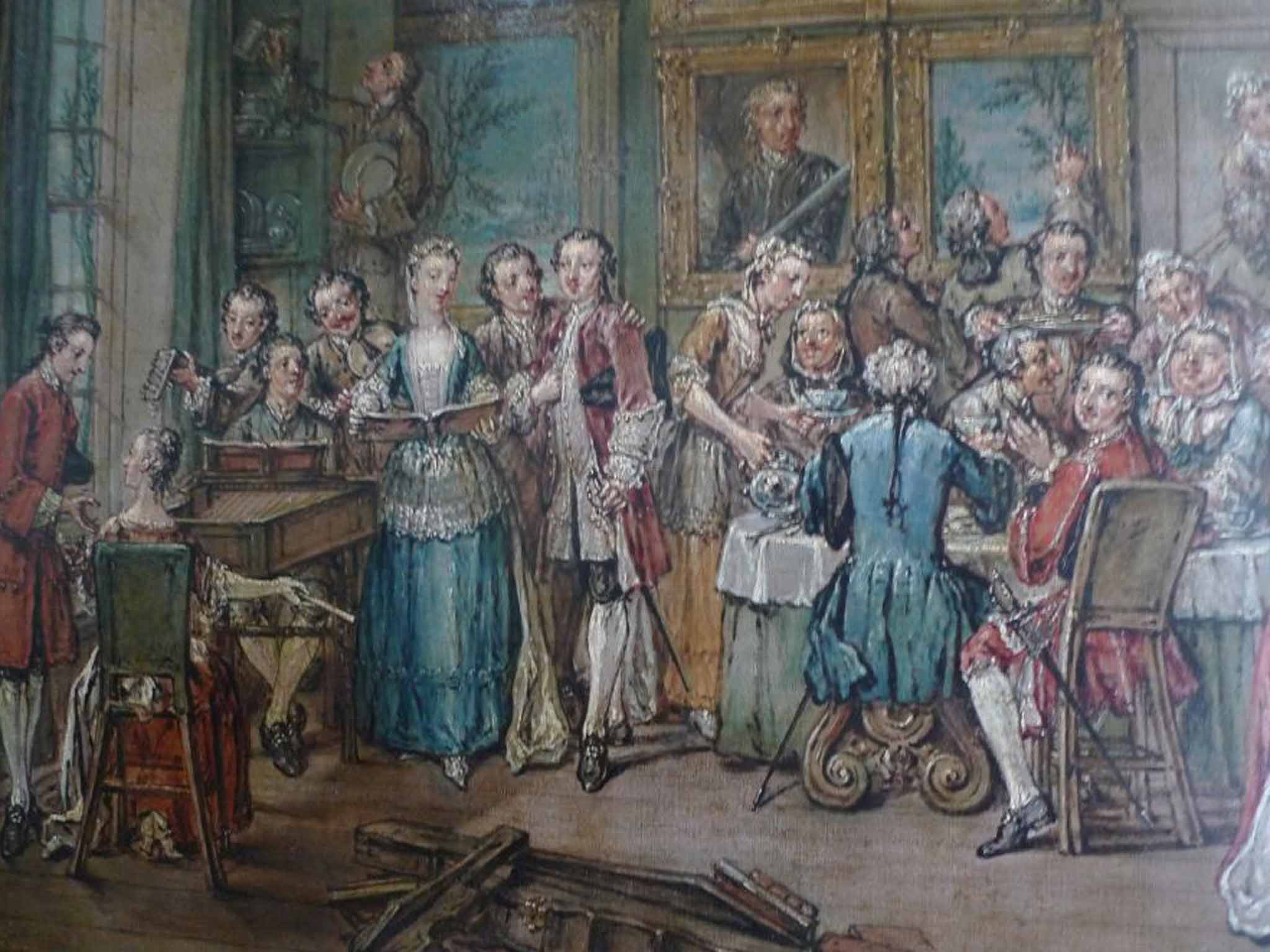The Huguenot Exhibition: 'Heretics' who made Britain their home
An exhibition of artworks by Huguenot refugees sheds light on the history of cross-Channel migration, writes Boyd Tonkin

Visitors to Boughton House this month who expect to find a cosy "heritage" display of family treasures may be in for something of a shock. A room in one wing of this English answer to the palace of Versailles sets the scene for its summer exhibition. An explanatory panel has a photo of one of those familiar but still shocking signs from the boarding-houses of late-1950s London: "No Coloureds". Next to it stands a recent picture from the southern Mediterranean of a tiny boat crammed with desperate migrants.
Read the captions, and the point strikes home. In the years after 1686 when Ralph Montagu, Earl and then first Duke of Montagu, was beautifying Boughton, Protestant refugees in their thousands risked their lives in frail, overcrowded craft to cross the Channel from France and seek refuge on a more tolerant shore. To many of the most gifted artisans, Montagu gave a welcome, a livelihood – and even a home.
The show at the Baroque mansion near Kettering – now the English seat of the Dukes of Buccleuch – is one of about 100 events mounted as part of this year's "Huguenot Summer" celebration. Not only does it gather a sumptuous selection of works from the Buccleuch art collection into a tribute to the skills of the Protestant incomers who left France in the years around 1685, when Louis XIV revoked the Edict of Nantes which had granted limited toleration. The exhibits, explains the current Duke of Buccleuch as we tour the exhibition with curator Paul Boucher and the leading historian of Huguenot arts and crafts Tessa Murdoch, offer "an insight into lives of these wonderful people, and what they gave us".
The exhibition also plants the influx of around 50,000 Huguenots into England firmly in context. It becomes one chapter in a longer story of persecution, migration and the quest for refuge. So that introduction, with its startling contemporary parallels, draws on material from the Migration Museum project, which has also curated part of the "Adopting Britain" exhibition now at the Southbank Centre. Not just a showcase of luxury craftsmanship, the Boughton displays bear painted, carved and gilded witness to the benefits of welcome and shelter. In the Stewards' Hall, a gorgeous silver tea- and coffee-service made in 1712 by Lewis Mettayer is captioned as "typical of the level of skill lost to France through religious persecution".
Twice the English ambassador to France, Ralph Montagu had seen and admired the expertise of Huguenot artists in Paris, Versailles and later at The Hague. As Louis XIV intensified the pressure on their faith, the ambitious courtier invited painters, architects, designers, carvers, smiths and weavers to adorn his famously lavish London home, Montagu House in Bloomsbury. ) Reputedly richer than the king, the first Duke did not do modesty. "Montagu House must have been incredible," says Paul Boucher. "They gilded everything in sight. It must have been the ultimate bling residence – absolutely spectacular."
In the mid-18th century, the Montagus moved their London pad to more fashionable Whitehall. Boughton now holds many of its surviving portable treasures, such as the panelling designed by Daniel Marot – whom Boucher calls the "overarching creative genius" behind the style of the Montagu houses. However, the "Huguenot web" now honoured at Boughton stretched from engravers to bakers, gardeners to gunsmiths, doctors to upholsterers. Its artefacts range from Jean Rocque's earliest "A-Z" maps of London to pistols, tapestries, porcelain, flower paintings, furniture and music scores. They take in a billiard table by Peter Rieusset and the "parquet de Versailles", then a novelty flooring in this country.
Meanwhile, in the State Rooms of the house, the ceiling paintings of mythological scenes by Louis Chéron bring something of the showy grandeur of the Sun King's palace to rural Northamptonshire. As Paul Boucher says, Ralph Montagu "wanted Versailles, and by and large he got it". In doing so, "He built a Huguenot house from floor to ceiling, and he staffed it with Huguenots". As we pass from room to room, Tessa Murdoch points out the provenance of the furniture, panelling, tapestries, timepieces and ceramics created by Huguenot craft dynasties.
It may come as a surprise that so many of the designers and decorators who embellished the glory of the ultimate Catholic monarch at Versailles were, in fact, sober Protestants by faith. Louis XIV and his ministers knew how much of his awe-inspiring splendour rested on "heretic" talent. Around the time of the Revocation in 1685, star artists and artisans would often be pressured to convert to Catholicism as the price of continued employment.
At Boughton, some of the most memorable legacies of refugee skill come in humble forms. Dotted around the house are pairs of early-18th-century candle-holders, manufactured from glass and designed with such understated elegance that they might still draw covetous eyes in a smart decor emporium. Later, we scan the meticulous account books that set down in dates and sums the patronage that restored dignity and status to the exiles. For Tessa Murdoch, "These archives are the absolute backbone… They bring the whole thing to life." In October 1712, they record a payment of £4 18s to one Phillip Arbonnet for "glace sconces". More than three centuries on, these artefacts, and the story of the immigrants who made them, may illuminate the present as much as the past.
The Huguenot Exhibition runs to 31 August, Boughton House, Kettering, Northamptonshire (01536 515731; boughtonhouse.co.uk)
Subscribe to Independent Premium to bookmark this article
Want to bookmark your favourite articles and stories to read or reference later? Start your Independent Premium subscription today.

Join our commenting forum
Join thought-provoking conversations, follow other Independent readers and see their replies